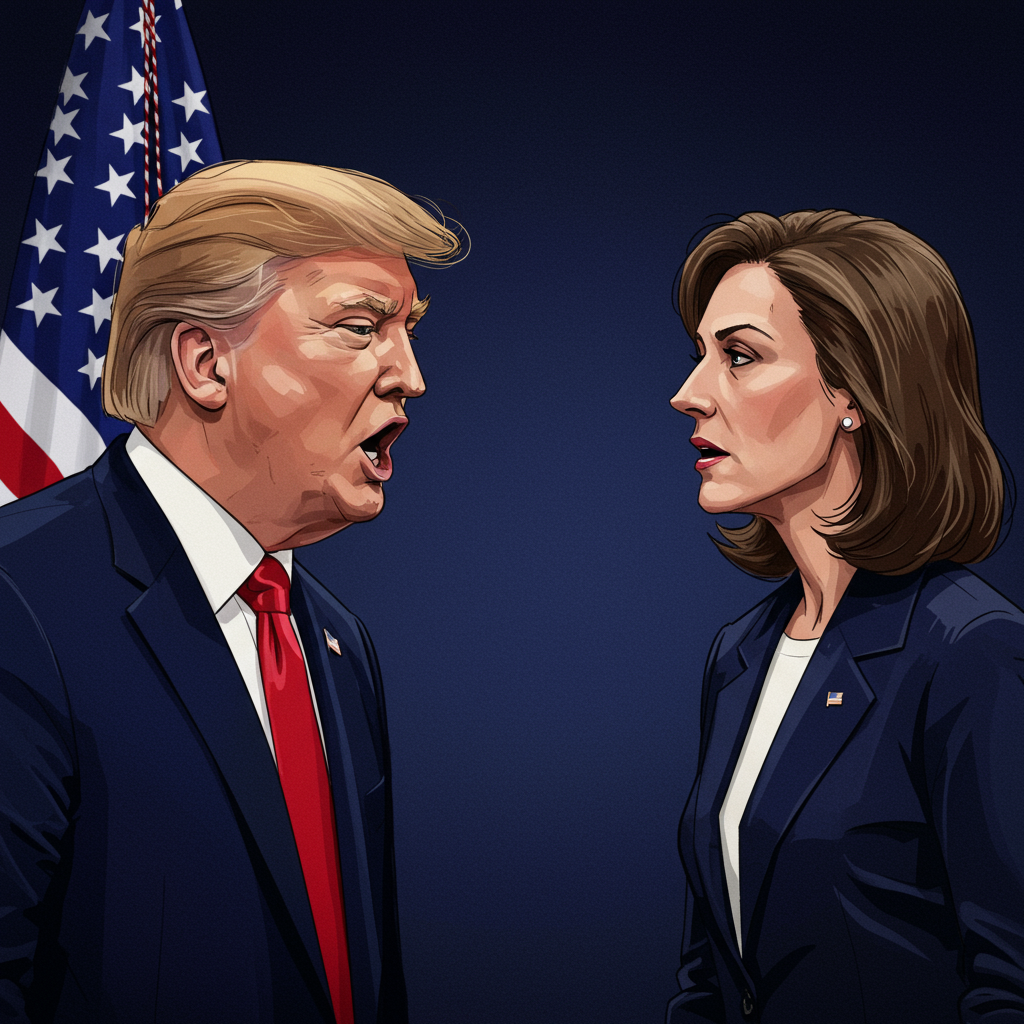The independence of the U.S. central bank faces a significant challenge as former President Donald Trump escalates efforts to assert control over the Federal Reserve. In a move that has ignited a fierce legal and political battle, Trump recently attempted to dismiss Federal Reserve Governor Lisa Cook, a decision her attorney immediately vowed to challenge in court. This dramatic confrontation underscores a broader campaign by Trump to influence the Fed’s monetary policy and potentially reshape its leadership. The outcome of this high-stakes dispute could set a critical precedent for the future autonomy of one of the nation’s most vital economic institutions.
Allegations Surface: Trump’s Rationale for Dismissal
President Trump announced his intention to remove Governor Cook via a social media post, citing serious allegations regarding her financial conduct. His top economic adviser, Kevin Hassett, publicly pressured Cook to take leave, stating, “If I were her in her circumstance, I would take leave,” and adding, “I think it’s the honorable thing to do.” These calls came after another Trump-appointed official, Bill Pulte, leveled accusations of mortgage fraud against Cook. Pulte, who oversees Fannie Mae and Freddie Mac, alleged that Cook obtained two home loans weeks apart in 2021, before her Federal Reserve appointment, for properties in Michigan and Georgia. He claimed she falsely declared each property as her primary residence, which often secures more favorable loan terms.
In a letter to Governor Cook, Trump explicitly tied his decision to these claims, stating, “In light of your deceitful and potentially criminal conduct in a financial matter, they cannot and I do not have such confidence in your integrity.” He emphasized that “the American people must be able to have full confidence in the honesty of the members entrusted with setting policy.” These allegations, however, are met with strong resistance from Cook’s legal team, who dispute their factual and legal basis.
Governor Cook’s Vehement Defense and Legal Strategy
Lisa Cook, the first Black woman to serve as a Fed governor, swiftly rejected Trump’s attempts to remove her. Her attorney, Abbe Lowell, strongly condemned the former president’s actions, calling them an “illegal attempt” and criticizing the manner of the announcement. “President Trump has taken to social media to once again ‘fire by tweet’ and once again his reflex to bully is flawed and his demands lack any proper process, basis or legal authority,” Lowell asserted.
Cook herself issued a powerful statement, asserting, “President Trump purported to fire me ‘for cause’ when no cause exists under the law, and he has no authority to do so.” She expressed her unwavering commitment to continue performing her duties to support the American economy. Lowell confirmed plans to file a lawsuit to challenge the dismissal, potentially setting the stage for a judicial review that could reach the Supreme Court. The Federal Reserve Board itself has indicated it will abide by any court decision, signaling its commitment to upholding legal processes.
The Crucial “For Cause” Standard and Fed Independence
A central element of this legal battle is the “for cause” provision embedded in federal law. This statute is specifically designed to insulate Federal Reserve governors from overt political pressure, allowing them to make monetary policy decisions based on economic data rather than political expediency. Under this legal framework, a president cannot simply dismiss a Fed governor at will; there must be a legitimate, specified reason, or “cause,” for their removal. This legal protection is a cornerstone of the Fed’s operational independence.
The Federal Reserve has historically operated with a degree of autonomy to ensure its decisions on interest rates and monetary supply are not swayed by short-term political cycles or the demands of any single administration. This independence is widely considered crucial for maintaining economic stability and public trust in the financial system. The Fed’s spokesman reiterated this stance, emphasizing the institution’s commitment to “transparency, accountability, and independence in the service of American families, communities, and businesses,” and underscoring that “monetary policy decisions are based on data, economic analysis, and the long-term interests of the American people.” The interpretation and application of the “for cause” standard will be paramount in the impending legal proceedings.
Broader Political Ramifications and Future Composition of the Fed
Beyond the immediate legal dispute, Trump’s attempt to oust Governor Cook is widely viewed as a strategic move to influence the Federal Reserve’s composition and, consequently, its policy direction. The former president has frequently criticized the Fed’s interest rate policies, advocating for lower rates to stimulate economic growth. This incident aligns with his past efforts to exert greater control over the central bank.
The timing of this action is particularly noteworthy. Trump already has an opportunity to appoint one new member to the Fed’s governing board following the recent surprise resignation of Adriana Kugler. If his attempt to dismiss Governor Cook were to succeed, it would create a second vacancy, potentially allowing him to appoint a majority of members to the seven-member board. Such a shift could significantly alter the balance of power within the Fed, potentially leading to more dovish monetary policies preferred by Trump. Democrats have been quick to rally around Governor Cook, with prominent figures like Senator Elizabeth Warren sharply criticizing Trump’s actions as “an illegal attempt” and an “authoritarian power grab” that violates the Federal Reserve Act. This incident therefore foreshadows a significant political confrontation over the very structure and future direction of U.S. monetary policy.
Safeguarding Central Bank Autonomy
The conflict over Governor Cook’s position transcends individual allegations; it represents a fundamental challenge to the established norms of central bank autonomy. The principle of an independent central bank is vital because it protects monetary policy from short-term political pressures. When politicians can easily influence the central bank, there’s a risk of policies that prioritize immediate political gains over long-term economic stability, potentially leading to inflation or boom-bust cycles. This “for cause” protection is a firewall against such interference, ensuring that economic decisions are made by experts, free from partisan influence. The legal battle ahead will not only determine Governor Cook’s fate but could also redefine the limits of presidential power over the Fed.
Frequently Asked Questions
Why did President Trump attempt to dismiss Federal Reserve Governor Lisa Cook?
President Trump’s attempt to dismiss Federal Reserve Governor Lisa Cook stemmed from allegations of mortgage fraud. A Trump-appointed official, Bill Pulte, accused Cook of obtaining two home loans in 2021 by falsely declaring each property as her primary residence. Trump cited these allegations in a letter to Cook, stating a lack of confidence in her integrity due to what he called “deceitful and potentially criminal conduct.” This move is also seen as part of a broader effort by Trump to assert more control over the central bank’s policies.
What legal grounds protect Federal Reserve governors from political dismissal?
Federal Reserve governors are protected from arbitrary political dismissal by a “for cause” provision in federal law. This statute mandates that a president can only remove a Fed governor for a legitimate, specified reason, not simply at will. This legal safeguard is designed to ensure the central bank’s independence from political pressure, allowing its members to make monetary policy decisions based on economic data and analysis rather than partisan influence. Governor Cook’s legal team argues that no “cause” exists under the law for her dismissal.
How might the legal challenge to Governor Cook’s dismissal impact the Federal Reserve’s independence and future policy?
The legal challenge to Governor Cook’s dismissal carries significant implications for the Federal Reserve’s independence and future policy. If Trump’s attempt were to succeed, particularly by expanding the interpretation of “for cause,” it could weaken the central bank’s traditional autonomy, making it more susceptible to political pressure. Combined with another current vacancy on the Fed’s board, a successful dismissal could allow Trump to appoint a majority of the seven-member board, potentially shifting the Fed towards more expansionary monetary policies and impacting interest rate decisions. The ongoing legal battle will likely be closely watched, potentially culminating in a Supreme Court decision that could redefine the boundaries of presidential authority over the Fed.
Conclusion
The escalating conflict over Federal Reserve Governor Lisa Cook’s position is more than a personal dispute; it represents a critical juncture for the foundational principles of U.S. central banking. The outcome of the impending legal battle, likely to be fought vigorously in court, will have profound implications for the interpretation of “for cause” removal provisions and, by extension, the Federal Reserve’s cherished independence. As political and legal forces collide, the nation watches to see whether the bulwarks designed to shield economic policy from political tides will hold firm, shaping the future of monetary policy and the integrity of a vital American institution.




